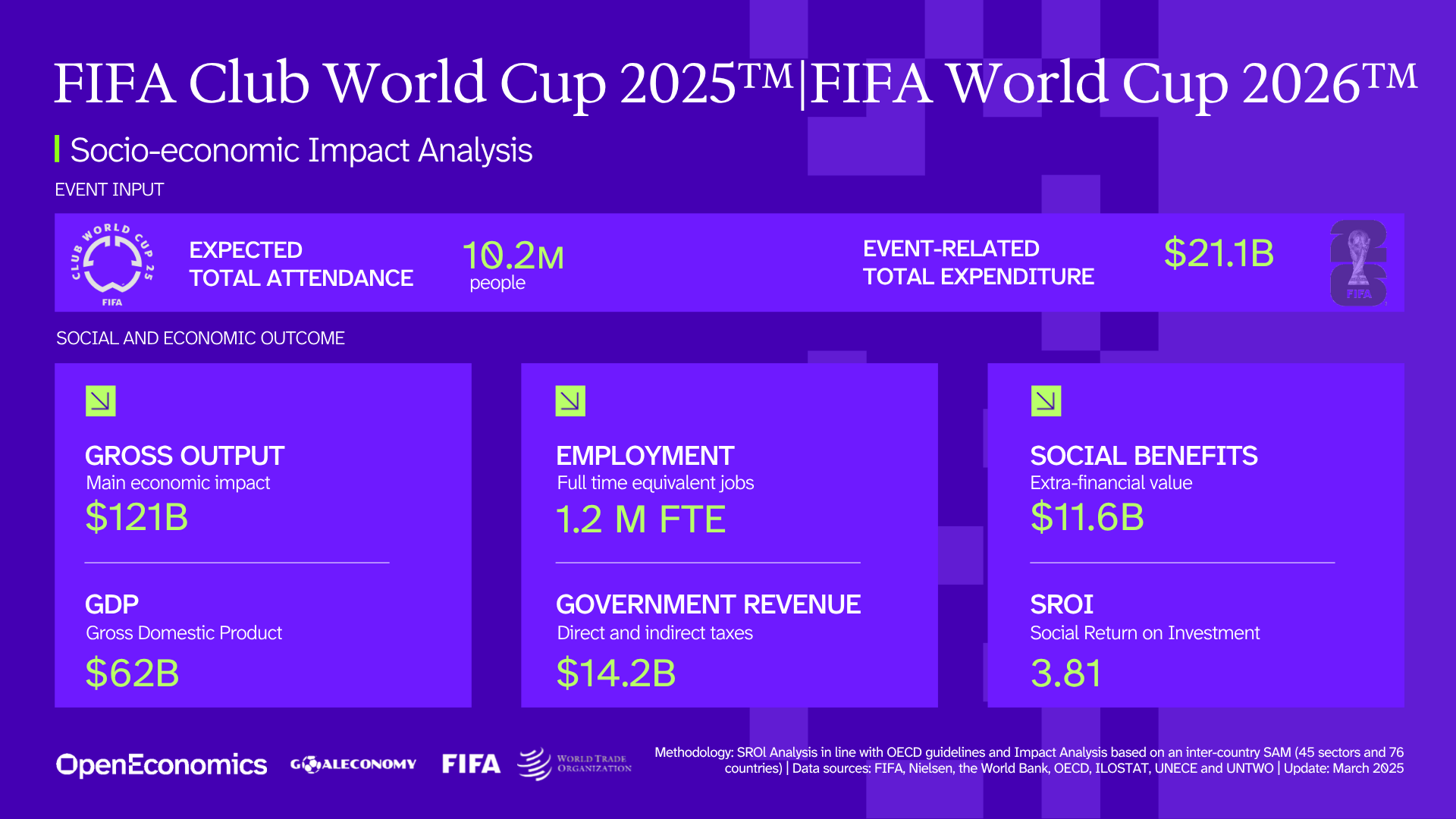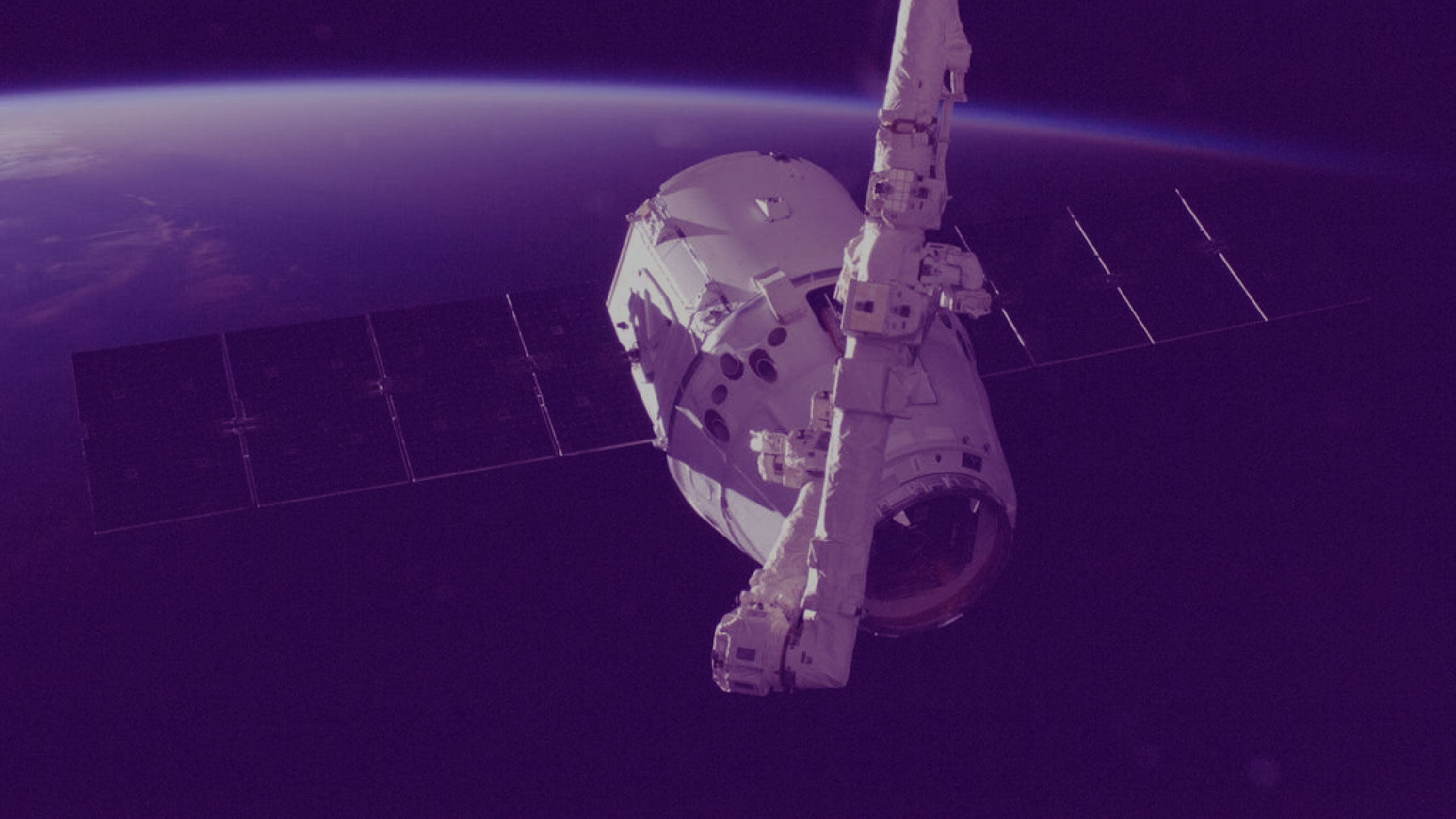GoalEconomy is an impact observatory created by OpenEconomics for FIFA and the World Trade Organization (WTO) to rigorously evaluate the economic and social outcomes of major global football tournaments. Using internationally recognized methods—including Impact Assessment, Social Return on Investment (SROI), and the Social Accounting Matrix (SAM)—GoalEconomy provides a benchmark for holistic analysis of large-scale sporting events, delivering insights on GDP, employment, trade, tourism, public health, and social cohesion both for host nations and worldwide.
OBJECTIVES
Economic gains and social impact of major FIFA tournaments
With the GoalEconomy initiative, FIFA and the WTO promote informed, transparent, and constructive debate on the economic forces shaping football as both a sport and a global industry. The program delivers reliable indicators that support fact-driven discussions about the sport economy and its effects on growth, trade, employment, tourism, health and social cohesion.
SOLUTION
Robust data sources and international standard methodologies for sport event Impact Assessment
GoalEconomy, accessible online, makes research and performance indicators widely available—to policymakers, media, and industry professionals—supporting informed interpretation and peer comparison.
OpenEconomics employs an integrated methodology that combines:
Macroeconomic impact assessment via an inter-country Social Accounting Matrix (45 sectors, 76 countries), aligned to OECD standards, to quantify direct, indirect, and induced impacts from tournament-related spending (investment, operations, tourism).
Social Return on Investment (SROI) calculated per OECD guidelines, involving stakeholder mapping, benefit monetization, and present value estimates for non-financial outcomes (like health, wellbeing, community development, tourism, and legacy).
Comprehensive data collection from global institutions (World Bank, OECD, ILOSTAT, UNECE, WTO, UNWTO) and market research leaders (Nielsen), enhanced with international benchmarks.
This approach ensures transparent, comparable results for cross-country, institutional, and private sector comparisons.
RESULTS
FIFA World Cup 2026: Socio-Economic Impact Highlights
Utilizing GoalEconomy and advanced OECD methodologies, the integrated analysis of the FIFA World Cup 2026 underscores substantial global and country-level impacts. Attendance in the United States is forecast at 5.2 million (including 1.2 million international visitors), generating a total direct spend of $11.1 billion.

Projected outcomes at the global level include:
GDP increase: $40.9 billion
Labor earnings: $20.8 billion
Employment: 824,000 full-time equivalent jobs
Social benefit value in excess of $8.28 billion, corresponding to a global SROI of 3.64
Value creation spans tourism, real estate, transport, hospitality, financial services, and public health (with population health gains attributable to increased physical activity).
Event legacy effects include durable improvements to jobs, territorial competitiveness, and engagement with sport.
Transparent and comparable measurement through GoalEconomy equips decision-makers in public and private sectors with an objective basis for strategic action, and is recognized as global best practice in major event impact evaluation.
ADDED VALUE
Driving value: facilitating international dialogue for FIFA, WTO, institutions and media
Worldwide and local perspectives: offers actionable territorial insights for policy design, promotion, and investment decisions
Analysis methods conform to international standards, adaptable for global and high-impact settings
KPIs are transparent, user-friendly, and easily communicated—even with complex underlying data
👉 Discover more about GoalEconomy













